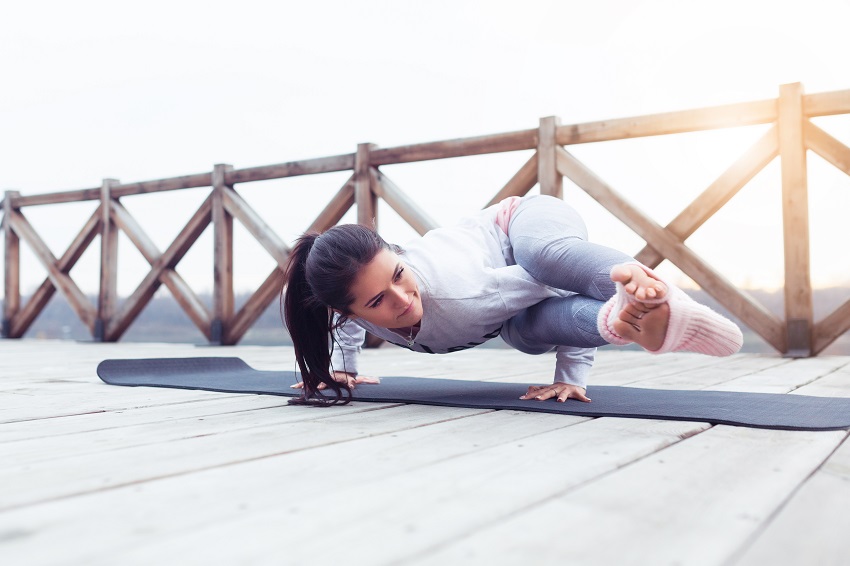×
Don't miss out!
Sign up for 10% off your first order
and exclusive product previews!
Name: Eight Angle Pose
Sanskrit: Astavakrasana
Pronunciation: ahsh-tah-vah-KRAHS-ah-nah
Pose Level: Advanced Level yoga pose

Astavakrasana is an ideal example of a posture that focuses on not just a deep understanding of the pose, but having the appropriate level of strength to carry it out. Eight-angle pose is a rewarding yet challenging asymmetrical arm balance yoga posture. Furthermore, it develops your balance, equilibrium, and stability on both the mental and physical fronts. It requires core strength, flexibility, confidence, and balance.
Related Article: What is the Meaning of Pranayama: Pranayama Breathing Techniques
For example, could the yogi use a supportive pillow, or blanket? Is there another variation of the maneuver?
If you are a beginner performing the Eight Angle pose successfully, a few variations are available to you.
You can use a yoga block under both your hands to provide more space for you to lift your body.
You can use a pillow under your legs to hold the pose.
Place your right hand on your chin comfortably to lift your head.
Eight-angle pose requires significant arm strength. Give Parsva Bakasana a try or Side Crow Pose as well.
Avoid performing Astavakrasana if you have any of the following conditions.
Eight-angle poses can be used to prepare Bhujapidasana and Dwi Pada Bhujasana.
Uttanasana, Kurmasana, Baddha Konasana, Paripurna and Ardha Navasana, Chaturanga Dandasana, Adho Mukha Vrksasana, Utthita Parsvakonasana, and Lolasana are different preparatory poses that help to perform Astavakrasana more effectively.
Get updates, top yoga recommendations, and an exclusive preview of our upcoming products!